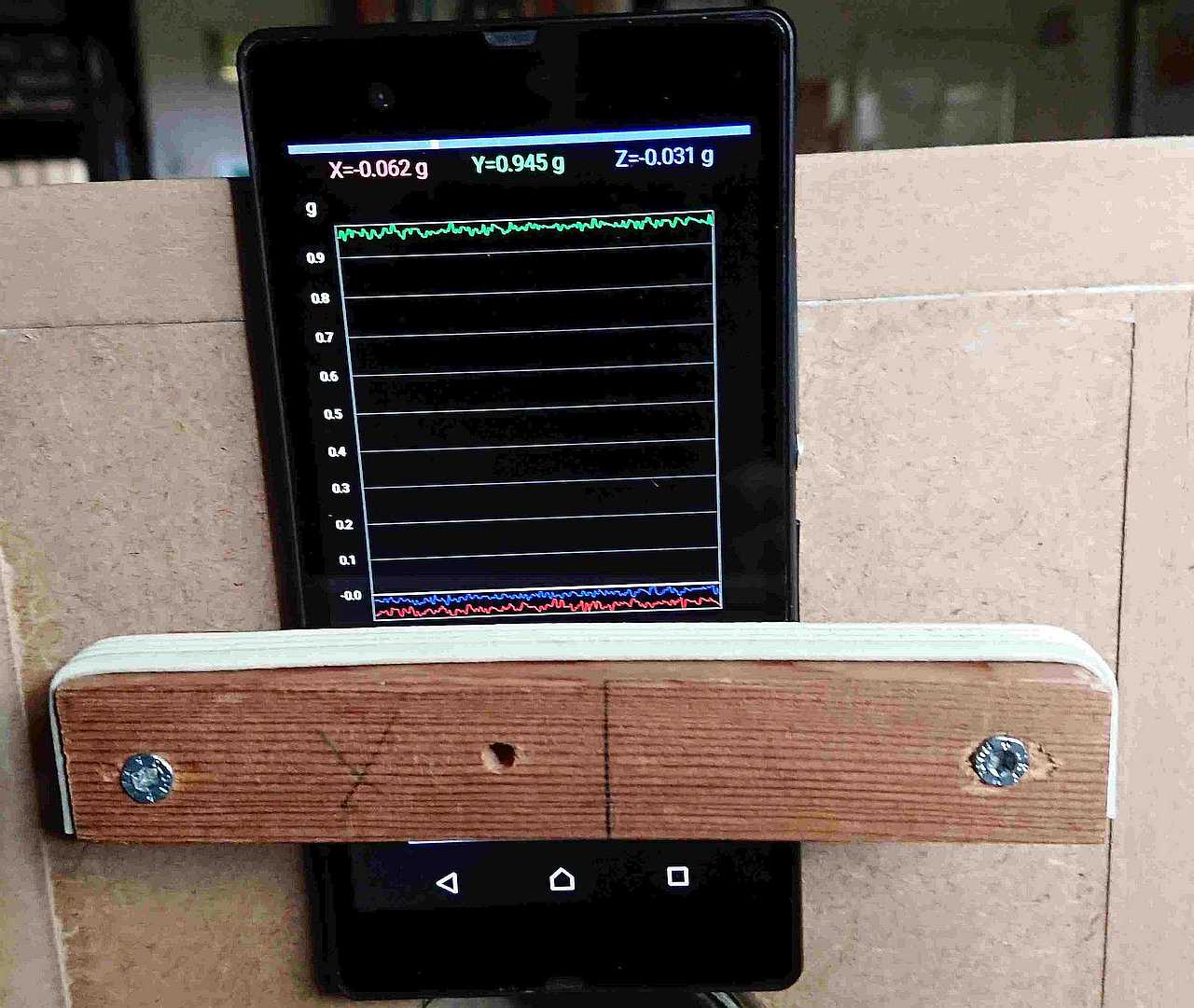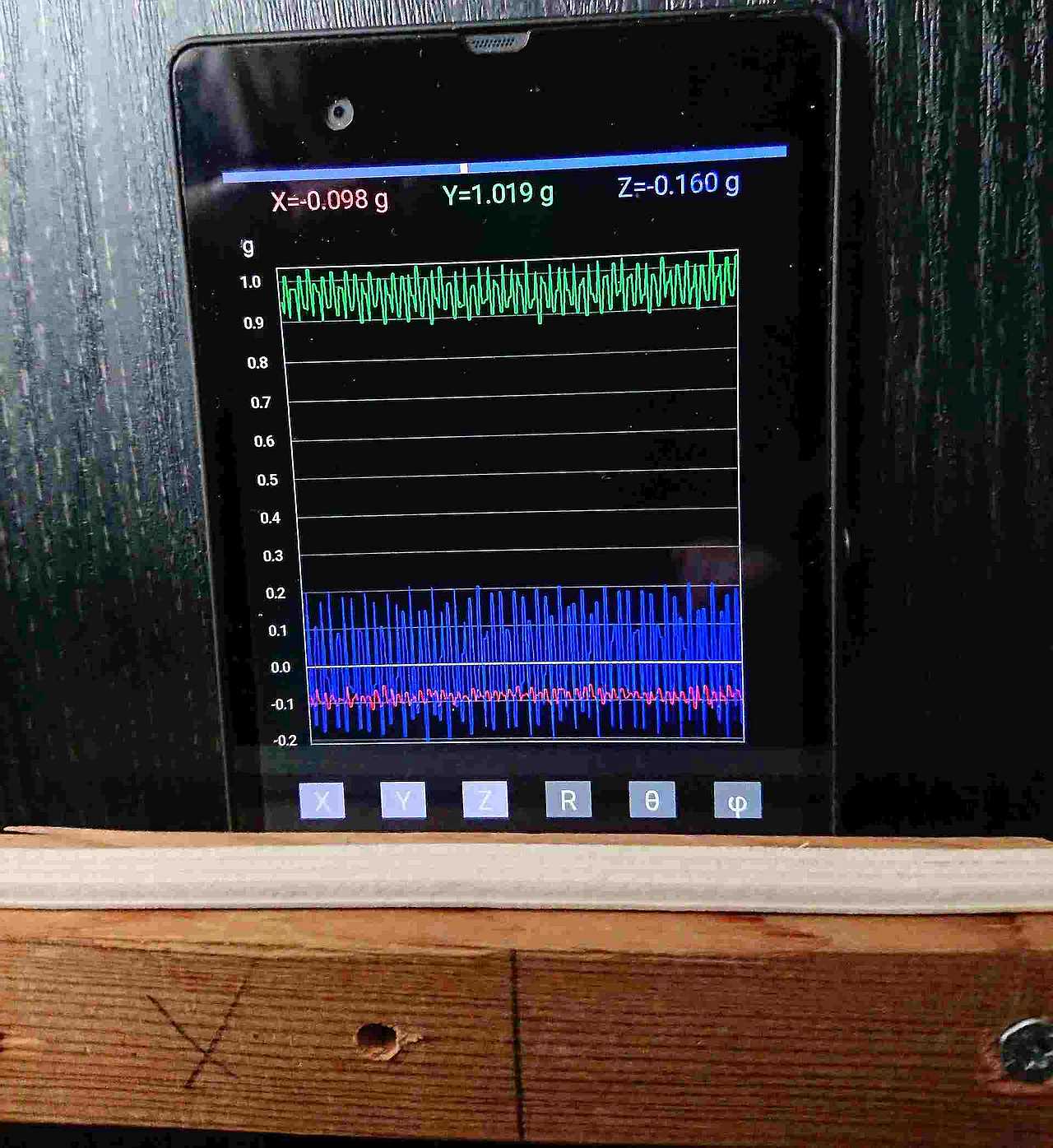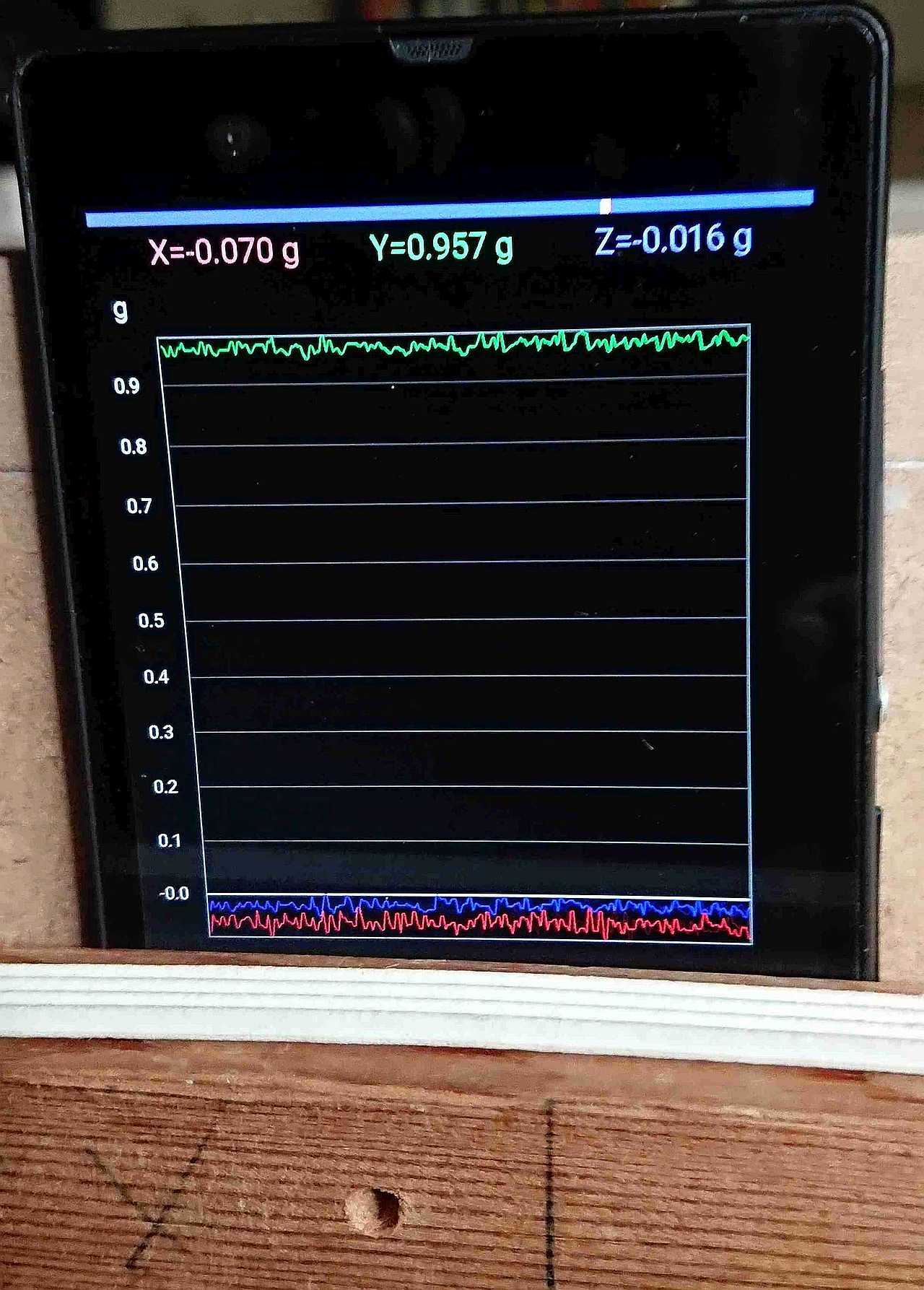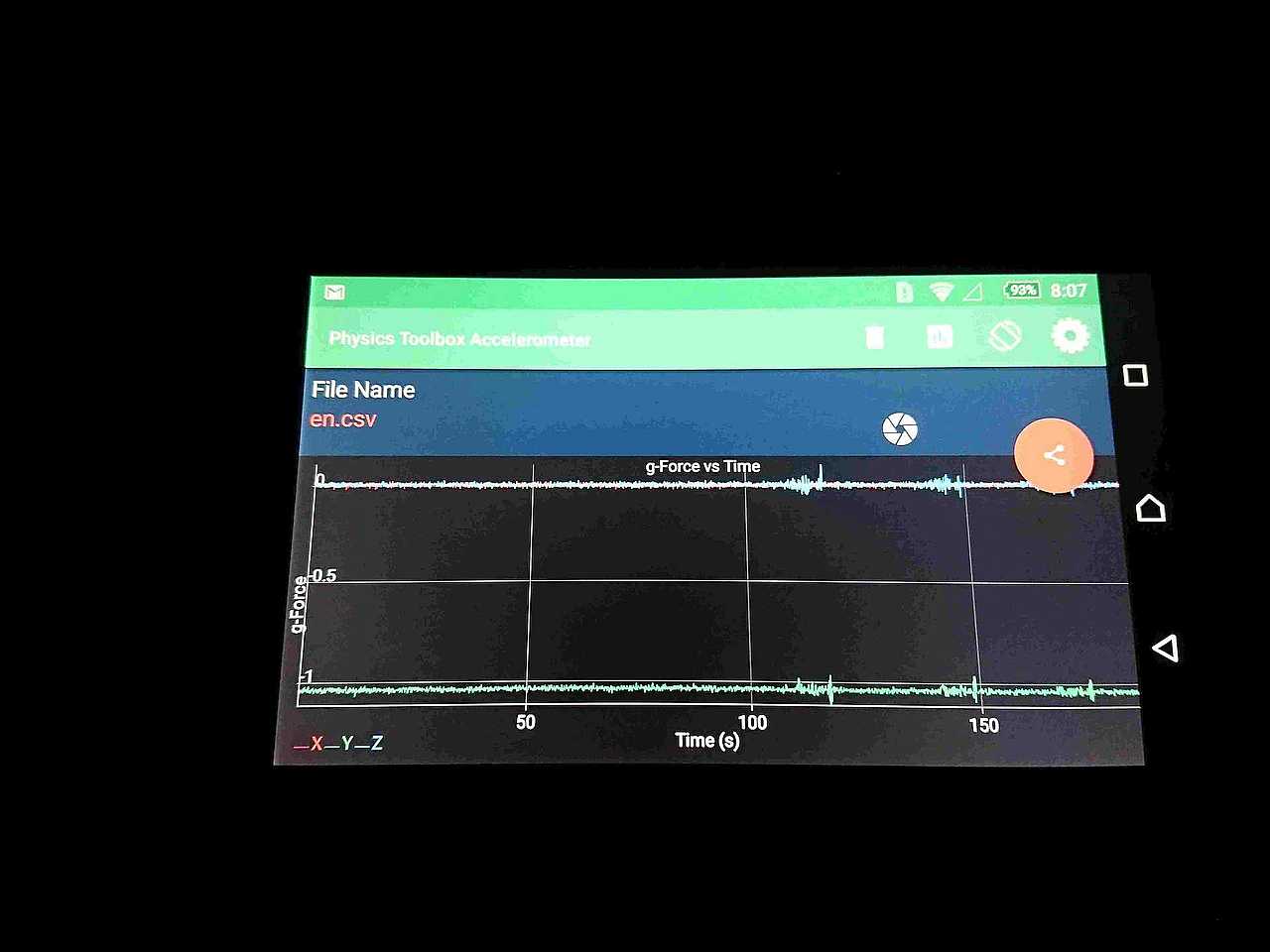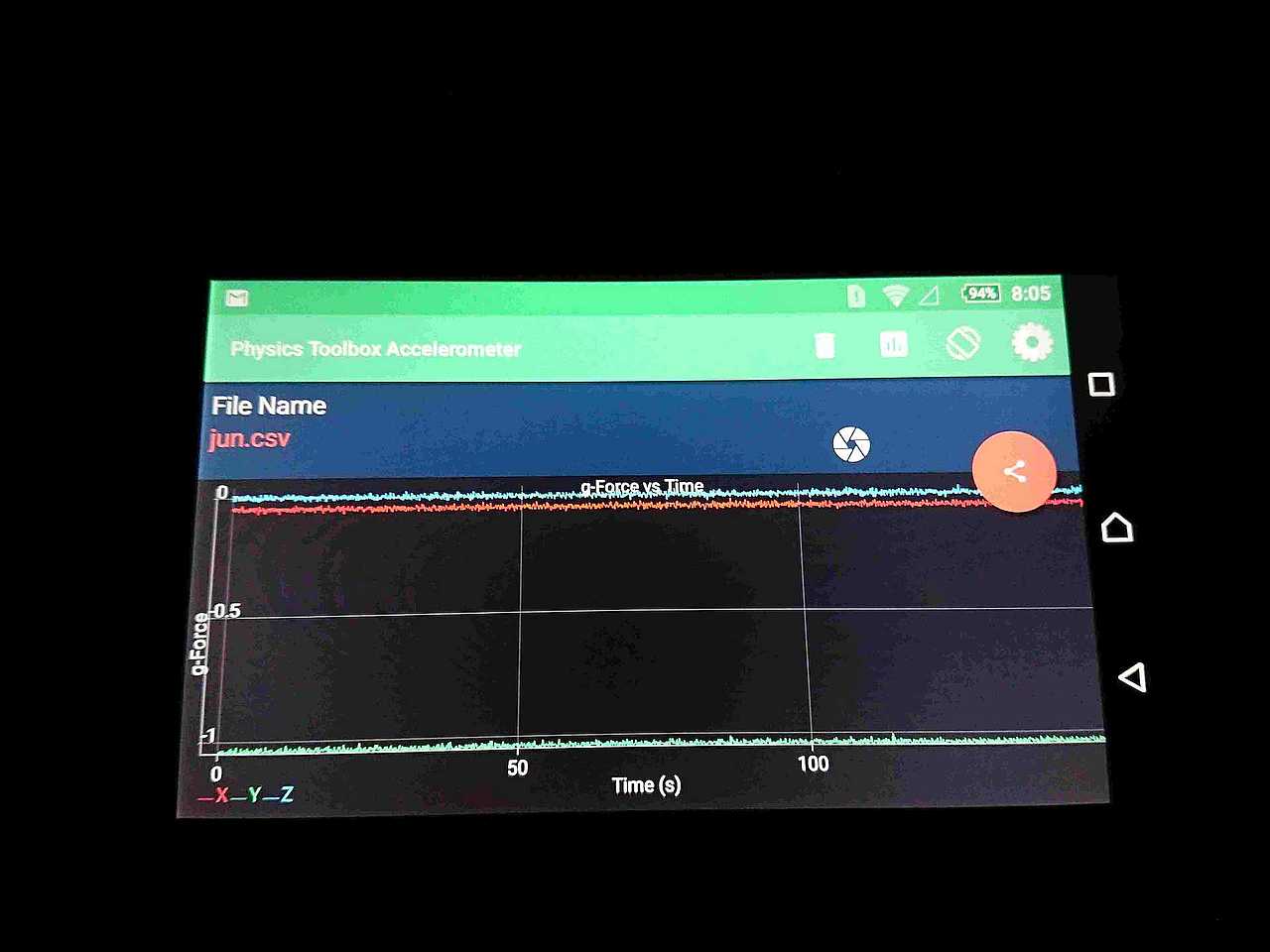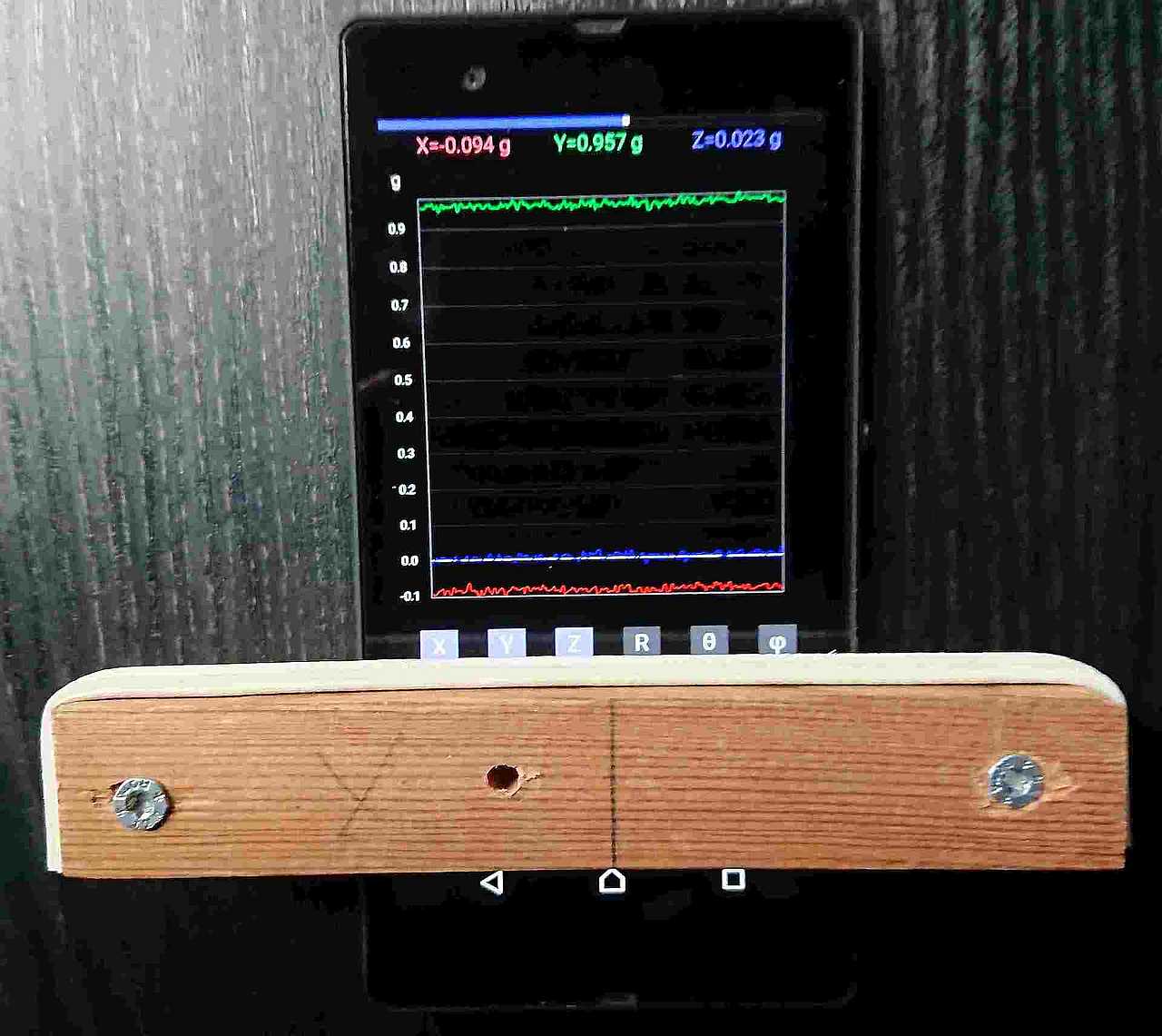
Here, I want to show the difference between a standard loudspeaker and my Special Woofer Design when it comes to vibration. My general point is that cabinet vibration, generated by woofer movement, degrades/distorts the sound of the midrange and tweeter unit. As you can see from the following, my layout makes a very clear difference, vibrations are effectively reduced!
The equipment used is not professional, but I have tried to be as fair as possible in the comparison. I used a standard
loudspeaker with a 17 cm woofer, membrane area is about 227 sq. centimeters, and weight is about 9 kilos. My Junior loudspeaker has 2 smaller woofers, their combined area is 273 sq. centimeters, a little bit more, but not significant. Junior is a bit heavier, around 20 kilos. Both loudspeakers have been tested for sound efficiency, and their sensitivity is very close to equal, which means that I can use the same test signal. I used a steady state Sine 200 Hz for the first test, and pink noise and a sine sweep (0 to 200 Hz) for the second test. Test tones were generated by the tone generator in the REW Loudspeaker software package, (really excellent software by the way, and free!!) and my RME Fireface Soundcard, and at last a standard power amplifier. Test loudness level was the same as normal listening level, not soft, nor provocatively loud, since I want to imitate a normal listening session in volume.
Test equipment was my old smartphone, Sony Experia Z, which was top-of-the-line at the time I bought it. I used 2 accelerometer software programs, Physics Toolbox Accelerometer, and Accelerometer Meter. See pictures! The smartphone was very firmly clamped to the rear of the speakers with a solid wood block, and I can assure that I monitor loudspeaker vibration and not a rattling smartphone! Anyway, I have tried to make everything identical for the 2 loudspeakers, and there are more comments with the photos. For me, the message is clear, this works!!

